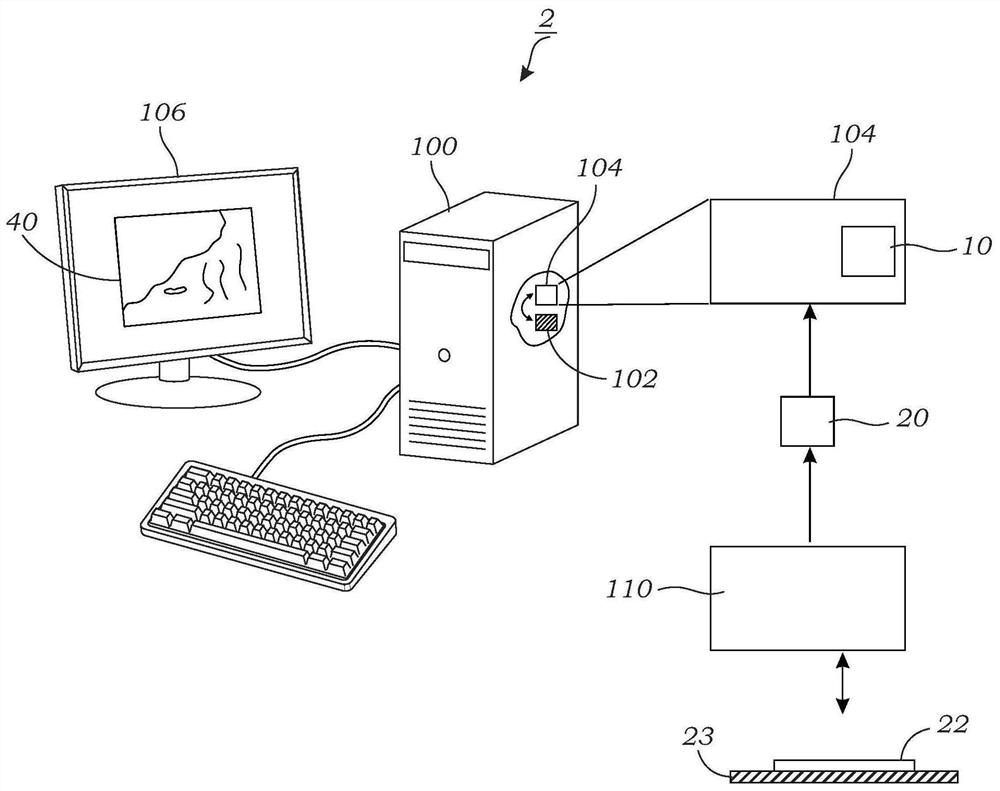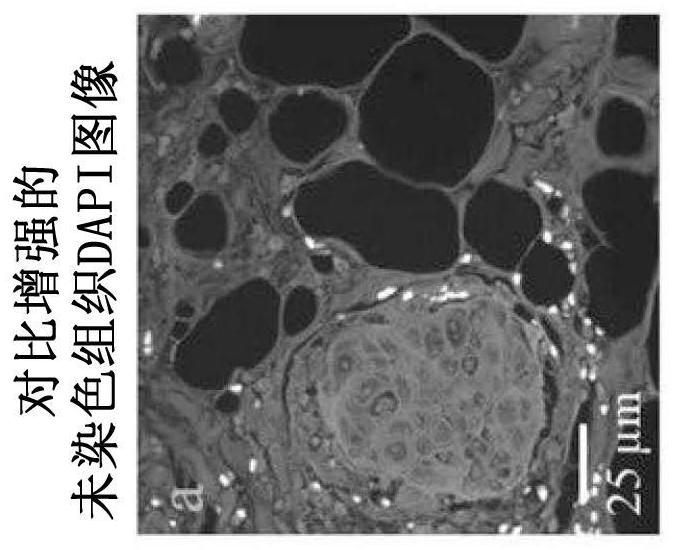Method and system for digital staining of label-free fluorescence images using deep learning
A fluorescent image, unlabeled technology, applied in neural learning methods, medical images, image data processing, etc., can solve the problems of weak optical signal, difficult to use, long scanning time, etc., and achieve the effect of saving time
- Summary
- Abstract
- Description
- Claims
- Application Information
AI Technical Summary
Problems solved by technology
Method used
Image
Examples
Embodiment Construction
[0029] figure 1 One embodiment of a system 2 for outputting a digitally stained image 40 from an input microscope image 20 of a sample 22 is schematically shown. As described herein, the input image 20 is a fluorescent image 20 of a sample 22 (such as tissue in one embodiment) that has not been stained or labeled with a fluorescent stain or marker. That is, the input image 20 is an autofluorescent image 20 of a sample 22 that fluoresces as a result of one or more endogenous fluorescence or other endogenous emitters of frequency-shifted light contained therein. Frequency-shifted light is light emitted at a frequency (or wavelength) different from the incident frequency (or wavelength). Endogenous fluorescence or endogenous emitters of frequency-shifted light can include molecules, compounds, complexes, molecular species, biomolecules, pigments, tissues, and the like. In some embodiments, the input image 20 (eg, raw fluorescence image) is subjected to one or more linear or non...
PUM
 Login to View More
Login to View More Abstract
Description
Claims
Application Information
 Login to View More
Login to View More - R&D
- Intellectual Property
- Life Sciences
- Materials
- Tech Scout
- Unparalleled Data Quality
- Higher Quality Content
- 60% Fewer Hallucinations
Browse by: Latest US Patents, China's latest patents, Technical Efficacy Thesaurus, Application Domain, Technology Topic, Popular Technical Reports.
© 2025 PatSnap. All rights reserved.Legal|Privacy policy|Modern Slavery Act Transparency Statement|Sitemap|About US| Contact US: help@patsnap.com



